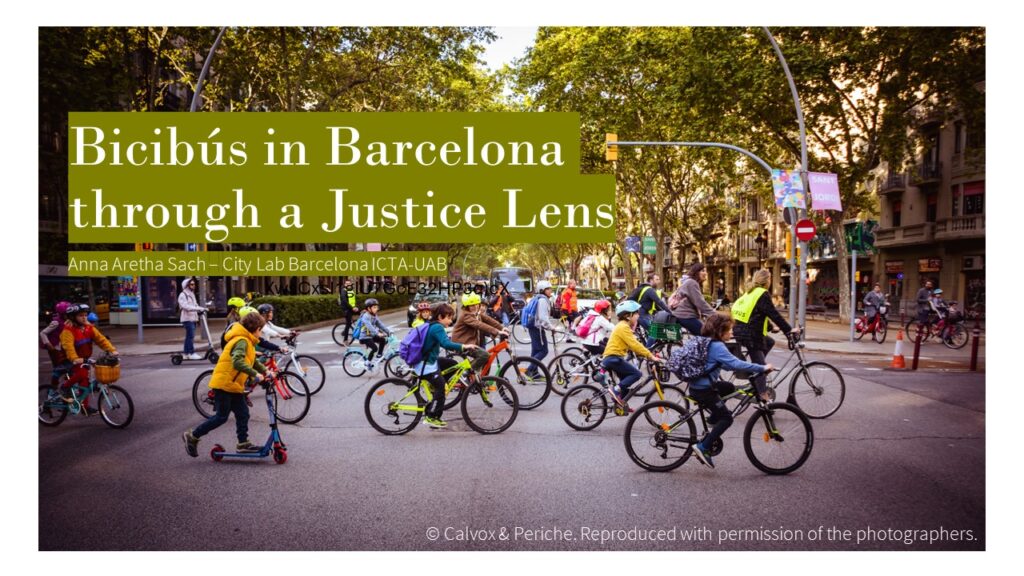Bicibús activists occupy the streets demanding healthier and more sustainable cities for everyone, but only represent a small privileged part of society. Studies on mobility justice have shown that even grassroot cycling movements may be entangled with systemic injustices and reproduce social inequalities. My masters thesis examined the Bicibús movement through a social justice lens. I asked: Who benefits and participates in Barcelona’s Bicibús? Who is excluded? Who is recognized and heard? Most Bicibús initiatives in Barcelona were created in the wealthier neighbourhoods, whereas no route connects schools with a high percentage of families in difficult situations. Low-income and racialized families are underrepresented among Bicibús organizers and participants in Barcelona. As a result, the movement mostly consists of middle-class and white families, with university degrees and flexible work schedules. There are barriers that make it difficult for families to participate in BiciBús such as work obligations, material requirements, physical abilities and confidence, lack of social ties and logistics. I conclude that the movement might consider raising awareness about racist and classist inequalities, creating support structures, and involving schools to make cycling protests more inclusive and diverse.

I developed my research as part of the Masters Interdisciplinary Studies in Environmental, Economic and Social Sustainability and with the support of the team at City Lab Barcelona. I interviewed 22 parents, including 6 organisers and 11 non-participants, about their way to school and their perception/experience of the Bicibús. In this post I am sharing a summary of the results in form of a presentation in English, Catalan and Spanish. You can find the full report here. I am happy for any questions, reflections, and comments.
I thank all the interviewees for their time and openness, all members of the City Lab Barcelona and other caring people whose support made this project possible!


